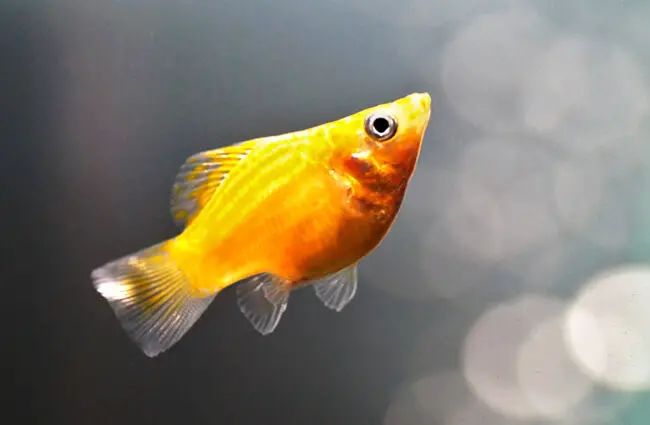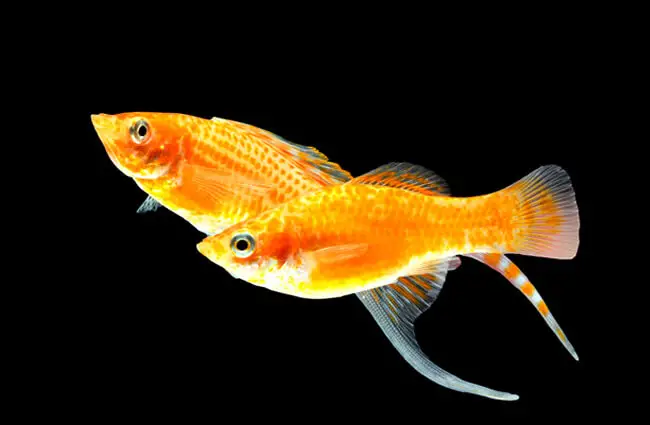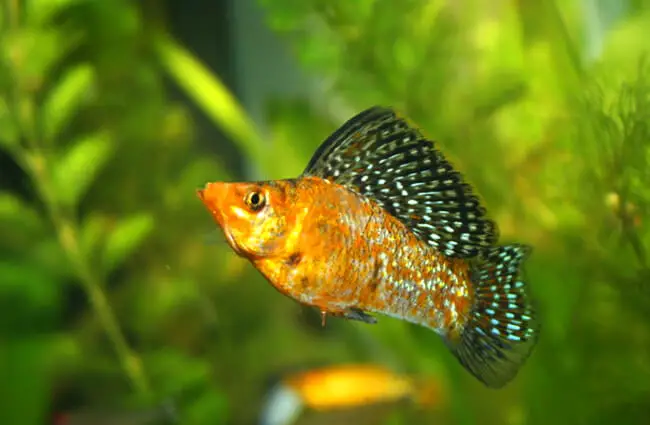The Marvelous Molly: A Deep Dive into a Freshwater Icon
In the vibrant tapestry of aquatic life, few creatures capture the imagination quite like the Molly. These small, yet incredibly resilient and diverse fish, belonging to the genus Poecilia, are far more than just colorful additions to home aquariums. From their intricate evolutionary history to their vital role in diverse ecosystems, Mollies offer a fascinating window into the natural world. Join us on an exploration of these captivating fish, uncovering their secrets from the basics to the profound, perfect for everyone from the curious enthusiast to the aspiring zoologist.
Unveiling the Molly: Basic Biology and Appearance
Mollies are small to medium-sized freshwater and brackish water fish, typically ranging from 2 to 4.5 inches (5 to 11 cm) in length, though some wild Sailfin varieties can grow larger. They are renowned for their incredible variety in color and finnage, a testament to both natural selection and selective breeding. Common types include the Shortfin Molly, the elegant Lyretail Molly, the striking Sailfin Molly with its magnificent dorsal fin, and the unique, selectively bred Balloon Molly. Their average lifespan in captivity is typically 3 to 5 years, given optimal care.

Where Mollies Thrive: Habitat and Distribution
The natural range of Mollies spans the Americas, from the southeastern United States down through Mexico and Central America. These adaptable fish are true survivors, found in an astonishing array of aquatic environments. Their preferred habitats include slow-moving rivers, streams, canals, ditches, and estuaries. What makes them truly remarkable is their tolerance for varying salinities. While primarily freshwater inhabitants, many Molly species, particularly the Sailfin Molly, are euryhaline, meaning they can thrive in brackish water and even venture into coastal marine environments. This adaptability is a key factor in their widespread distribution and ecological success. For an animal lover hoping to spot a Molly in the wild, look for clear, vegetated waters in their native range, particularly where freshwater meets the sea.

The Molly’s Menu: What They Eat
Mollies are omnivorous, with a diet that reflects their diverse habitats. In the wild, their primary food source consists of algae and other plant matter, which they graze from surfaces. They also consume small invertebrates, such as insect larvae, worms, and crustaceans. This varied diet makes them important members of their ecosystems, helping to control algal growth and serving as a link in the food chain. In captivity, a balanced diet is crucial, consisting of high-quality flake or pellet food supplemented with spirulina, blanched vegetables like zucchini or spinach, and occasional treats of live or frozen brine shrimp or bloodworms.

Life’s Journey: Reproduction and Evolution
Mating and Reproduction: The Live-Bearing Phenomenon
One of the most captivating aspects of Molly biology is their reproductive strategy. Unlike many fish that lay eggs, Mollies are livebearers, meaning they give birth to fully formed, free-swimming young called fry. Reproduction begins with internal fertilization, where the male uses a modified anal fin called a gonopodium to transfer sperm to the female. Females can store sperm for several months, allowing them to produce multiple batches of fry from a single mating. The gestation period typically lasts 28 to 40 days, after which the female releases anywhere from 10 to over 100 fry, depending on her size and age. Parental care is minimal, and adults may even prey on their own offspring, necessitating ample hiding places for the fry in their environment.

An Evolutionary Tale: The Molly’s Ancestry
The genus Poecilia, to which Mollies belong, has a rich evolutionary history characterized by remarkable adaptation. Their ability to thrive in a wide range of salinities is a prime example of evolutionary success, allowing them to colonize diverse niches and avoid competition in purely freshwater or marine environments. This adaptability has also led to significant genetic diversity among Molly species, with various populations evolving distinct color patterns, fin shapes, and physiological tolerances. Studying Molly evolution provides valuable insights into speciation, adaptation to environmental change, and the genetic mechanisms underlying phenotypic variation.

Mollies in the Ecosystem: Interactions and Contributions
In their natural habitats, Mollies play several crucial ecological roles:
- Algae Control: Their herbivorous tendencies make them natural grazers, helping to keep algal growth in check within their ecosystems.
- Food Source: Mollies serve as a vital food source for a variety of predators, including larger fish, birds, and reptiles, contributing to the energy flow within food webs.
- Insect Control: They are known to consume mosquito larvae, offering a natural form of pest control in some areas.
- Competition: Like all species, Mollies compete with other fish for resources, influencing the community structure of their aquatic environments.
Mollies and Humanity: A Shared Journey
Mollies in Human Culture: More Than Just a Pet
Mollies hold a significant place in human culture, primarily through the aquarium hobby. Their hardiness, vibrant colors, and live-bearing nature make them ideal for both beginner and experienced aquarists. Beyond their aesthetic appeal, Mollies have also contributed to scientific research, particularly in genetics, reproductive biology, and studies on adaptation to environmental stressors like salinity changes. Their role in mosquito control in some regions highlights their practical utility, demonstrating how these small fish can have a positive impact on human health.
Encountering a Molly in the Wild: What to Do
For a hiker or nature enthusiast who stumbles upon a Molly in its natural habitat, the best course of action is simple: observe and appreciate. These fish are small and generally shy. Do not attempt to catch or disturb them. Enjoy the sight of these resilient creatures navigating their world. If you are actively seeking them, focus on clear, slow-moving waters with plenty of aquatic vegetation in their native ranges, particularly in the coastal regions of the Americas. Patience and a keen eye are your best tools.
A Zookeeper’s Guide to Molly Care
Caring for Mollies in a captive environment, such as a zoo or public aquarium, requires attention to their specific needs to ensure their health and well-being. Here are key tasks and considerations:
- Habitat Requirements:
- Tank Size: Provide ample space, generally a minimum of 20 gallons for a small group, with larger tanks for Sailfin varieties.
- Water Parameters: Maintain stable temperatures between 72-82°F (22-28°C). pH should be slightly alkaline, 7.5-8.5. While they tolerate freshwater, adding aquarium salt (1-2 tablespoons per 5 gallons) can benefit their health, especially for wild-caught or brackish-adapted species.
- Filtration: Robust filtration is essential to maintain pristine water quality.
- Decor: Offer plenty of live or artificial plants for hiding and grazing, along with open swimming areas.
- Dietary Needs:
- Feed a high-quality omnivorous diet, rich in vegetable matter. Spirulina flakes, blanched zucchini, and spinach are excellent staples.
- Supplement with protein sources like brine shrimp, daphnia, or bloodworms a few times a week.
- Feed small amounts multiple times a day to prevent overfeeding and maintain water quality.
- Social Structure:
- Mollies are schooling fish and thrive in groups. Keep at least 3-5 individuals.
- Maintain a higher ratio of females to males (e.g., 2-3 females per male) to prevent excessive male harassment of individual females.
- Breeding Management:
- If breeding is desired, provide dense vegetation for fry to hide.
- Consider a separate breeding tank or a breeder box for pregnant females to protect fry from predation by adults.
- Health Monitoring:
- Regularly observe fish for signs of disease, such as lethargy, clamped fins, spots (Ich), or frayed fins (fin rot).
- Quarantine new arrivals to prevent disease introduction.
- What to Avoid:
- Overcrowding: Leads to stress, aggression, and poor water quality.
- Poor Water Quality: Fluctuations in parameters, high ammonia/nitrite, or nitrates are detrimental.
- Aggressive Tank Mates: Mollies are generally peaceful but can be bullied by larger, more aggressive species.
- Sudden Environmental Changes: Avoid rapid shifts in temperature, pH, or salinity.
- Lack of Vegetable Matter: A diet solely of protein can lead to digestive issues.
Molly Marvels: A List of Interesting Facts
- Mollies are often used in scientific research due to their adaptability and ease of breeding.
- Many of the vibrant color morphs and fin variations seen in aquariums, like the striking orange or black Mollies, are the result of generations of selective breeding by humans.
- The Sailfin Molly (Poecilia latipinna and Poecilia velifera) is famous for its extraordinarily large, sail-like dorsal fin, which is particularly prominent in males.
- Mollies can hybridize with other species within the Poecilia genus, leading to unique offspring.
- Their ability to live in both fresh and brackish water is a rare and fascinating physiological adaptation.
- The Balloon Molly is a selectively bred variety characterized by its shortened, rounded body, a genetic trait that can sometimes lead to health issues.
- Mollies are excellent algae eaters, making them beneficial for maintaining a clean aquarium environment.
The Enduring Charm of the Molly
From their humble origins in the waterways of the Americas to their status as global aquarium stars, Mollies continue to fascinate and educate. Their remarkable adaptability, diverse forms, and engaging behaviors make them a subject worthy of continued study and admiration. Whether you are a student delving into aquatic biology, an animal lover seeking to connect with nature, or a zookeeper dedicated to their care, the Molly offers endless opportunities for discovery and appreciation. These small fish remind us that even the most common creatures hold profound lessons about life, evolution, and the intricate balance of our planet’s ecosystems.

![Red Angus Closeup of a beautiful Red Angus cowPhoto by: U.S. Department of Agriculture [pubic domain]https://creativecommons.org/licenses/by/2.0/](https://animals.net/wp-content/uploads/2020/03/Red-Angus-4-238x178.jpg)




![Red Angus Closeup of a beautiful Red Angus cowPhoto by: U.S. Department of Agriculture [pubic domain]https://creativecommons.org/licenses/by/2.0/](https://animals.net/wp-content/uploads/2020/03/Red-Angus-4-100x75.jpg)

